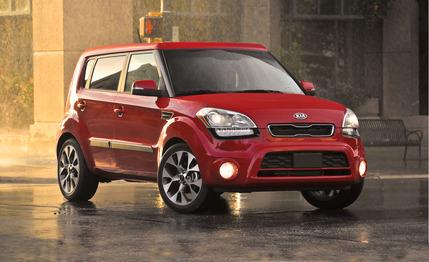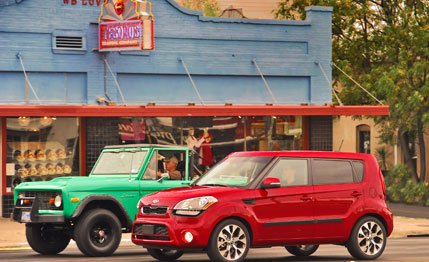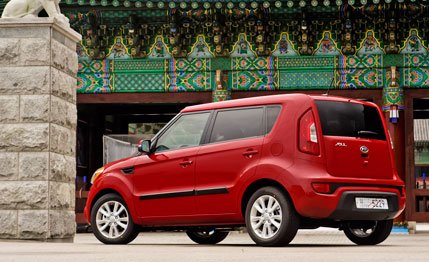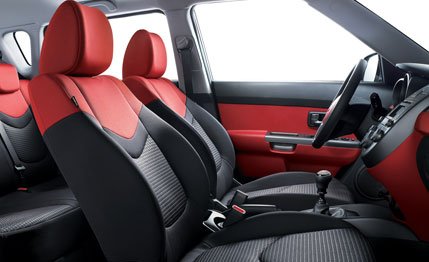 Instrumented Test
Instrumented Test
Proposition: In the absence of turbocharging, the smaller an engine’s displacement, the more you need a manual transmission.

Proof: The 2012 Kia Soul 2.0 and its new six-speed, row-your-own gearbox.
We have long been on record as defenders of the straight stick—Save the Manuals!—even in this age of hyperquick and seemingly telepathic dual-clutch automatics. Making gear selections for yourself rather than delegating them to a system operating under the supervision of a microchip enhances engagement with the vehicle.
That’s a key factor in determining how fun a vehicle is to drive. Acceleration is another. In cars propelled by naturally aspirated engines at the small end of the scale, you’re very likely to get across the intersection and up to speed more quickly with a manual gearbox.

By the Numbers
For 2012, Kia freshened its uninhibited compact boxmobile, an overhaul that included improved output from the optional 2.0-liter four as well as six-speed automatic and manual transmissions in place of the previous four- and five-speed units, respectively.
More power—164 hp and 148 lb-ft of torque versus 142 and 137 from the previous 2.0-liter—and more gearbox cogs equal more go. No surprise there. When we put a 2012 2.0-liter Soul Exclaim (automatic only) through its paces recently, it sprinted to 60 mph in 8.2 seconds and covered the quarter-mile in 16.4 at 84 mph. That’s 0.3 second slower to 60 than the five-speed-manual Soul Sport we tested in April 2009 and a dead heat through the quarter. When we put this 2.0-liter, six-speed-stick Soul on the clock, we recorded a 0-to-60-mph time of 7.4 seconds and a quarter-mile of 16.0 at 87 mph. That’s a strong case for the manual, right?

Automatic or manual, the new 2.0-liter Soul is rated 26 mpg city and 34 mpg highway by the EPA (or 27/35 with Kia’s new engine stop/start option, absent in our test car). We recorded 27 real-world mpg. If that sounds so-so, consider that the previous 2.0 manual was rated at 24/30—our test mileage was 22 mpg—and that the new 2.0 and six-speed-auto combo returned 21 mpg in our hands.

Teaching Tool
We weren’t impressed with the five-speed manual in the old Soul Sport, dismissing it as “vague, sloppy, and notchy.” The new six-speed is much better, although the gearing is tall, the shifter’s throws are a little long, and shifts refuse to be hurried. But the clutch action is sweet, and the engagements into a chosen gear are positive. This would be a good setup for teaching someone the pleasures of driving a stick shift.
Other dynamic elements are as described in our previous test of the Exclaim model: good brake-pedal feel, average stopping distances, so-so skidpad grip, and surprisingly little body roll for a tallish vehicle. One could even throw around the word “sporty,” although one also shouldn’t get carried away.
The steering is light and devoid of feel at parking lot speeds, but effort builds with mph, and aside from a little on-center secrecy, it’s quick and accurate. And other than a stiff nonresponse to sharp little bumps, the ride quality is firmly pleasant.

Beyond that, the Soul is quiet—a soft point on the pre-2012 version—roomy, and well appointed within, although we don’t really need to see the word “Soul” repeated over and over on the inner door panels and seat upholstery. This ain’t designer luggage.
Like most vehicles emerging from the Hyundai-Kia conglomerate these days, the Soul represents a compelling combination of quality fit and materials, standard equipment, and attractive pricing. Stir in outside-the-box styling (pun intended), and it’s a recipe that’s hard to beat.